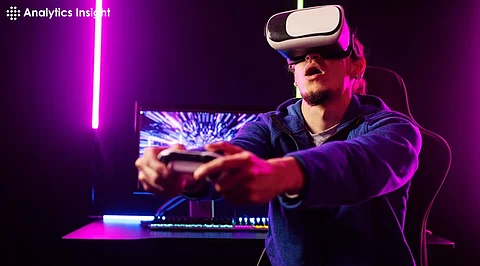

Esports has evolved from keyboard-and-mouse battles. A new wave is now taking over: VR Esports. This evolution in competitive gaming is pushing boundaries, making matches more interactive, immersive, and physically engaging. As technology advances, VR Esports is quickly shaping up to be the future of gaming competitions.
Traditional esports require speed, strategic thought, and good control. In VR Esports, this will be enhanced to include full-body movement so players can engage their bodies with the game world in a real, physical manner. This deepens the link between player action and in-game consequence, creating the potential for intense and thrilling competition.
Unlike traditional gaming where players are usually seated in front of a computer screen, VR Esports seats them in the game. This means dodging, jumping, swinging, and reacting to a move right after it's performed. In addition, immersion like this converts mere gaming into sport, so games become an incredibly competitive aspect. Each game appears more lifelike due to this very quality.
VR Esports blends digital competition with real-world movement. Players must rely on physical stamina, agility, and coordination. Unlike standard esports, where players remain seated, VR games demand full-body participation, making them more physically engaging and skill-driven.
Titles such as Pistol Whip and Echo Arena require quick reflexes, accurate hand movement, and strategic position for VR Esports games. Athletes train to enhance their gaming skills and physical endurance. This combination of physical activity and competitive gaming will attract a new sea of gaming enthusiasts and expand the potential scope of the esports community.
The VR of esports is now evolving spectatorship. Fans now do not merely watch a game on a screen; they walk into virtual stadiums and feel close to the game action. Such events in VR Esports permit viewers to explore the game world, change views, and enjoy competition more intimately than ever.
This innovation in how audiences can view esports and experience matches, which are always dynamic and highly interactive, transforms how audiences will interact with an esports match.
Rapid advancement in VR technology makes competitive gaming more accessible and enjoyable. High-resolution displays, advanced motion tracking, and haptic feedback create a more responsive and realistic gaming environment. As VR hardware becomes more affordable, more players and fans can participate, accelerating the growth of VR Esports.
In addition, improved network capabilities and cloud gaming are expanding opportunities. Reduced latency and high-speed internet connections ensure smooth gameplay, allowing players from different regions to compete seamlessly. These advancements are setting the stage for global VR Esports leagues and tournaments.
Despite its rapid growth, VR Esports faces challenges. The cost of VR headsets and accessories remains a barrier for many players. Additionally, playing VR games requires physical space, which can limit participation. However, as technology evolves and prices drop, accessibility is expected to improve.
Motion sickness is another barrier, but continuous improvement in VR design and software optimization makes it less of a discomfort. The creators are really working on creating a smooth experience so that players can compete with their best without any distractions.
The future of VR Esports seems quite promising. There are now many more leagues and tournaments coming into the fore that attract both professional and amateur players. With advancements in VR technology, completely new esports experiences will take shape combining virtual reality with other technologies such as augmented reality and blockchain.
With the rise of VR Esports, expect integration into cloud gaming and high-performance games for lessened needs on equipment by the gamers themselves. Further in this space are AI coaching, real-time analytics, and even upgraded fan experiences. As it seems that VR combines high-tech game-playing experience, along with haptic physical interactivity, there will be great future scope in becoming the face of competitive gaming with VR Esports.
